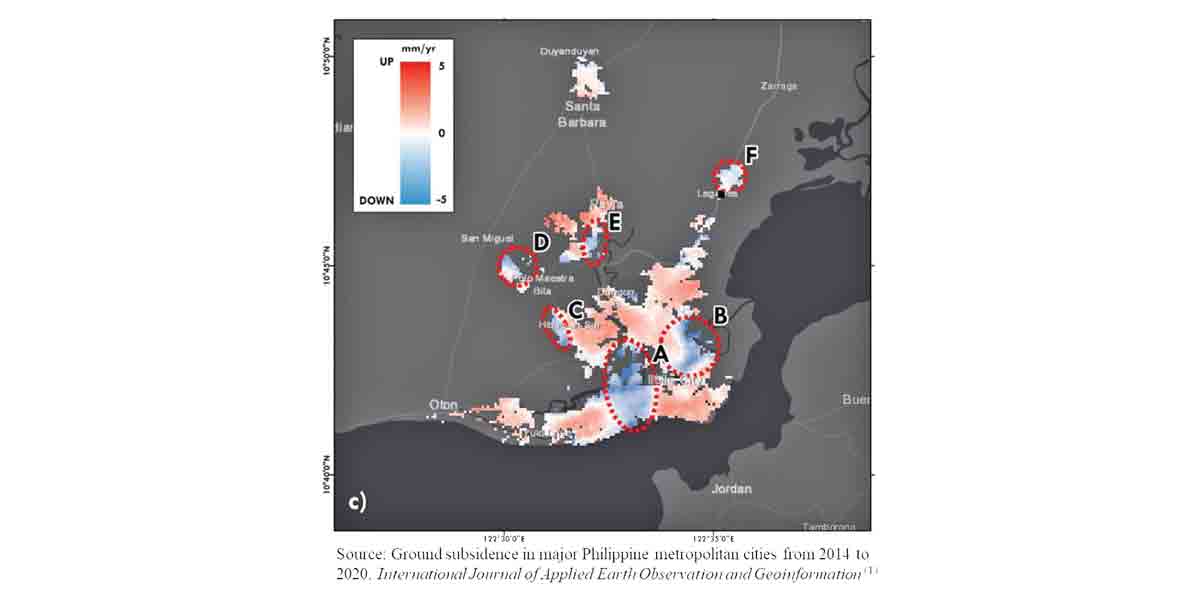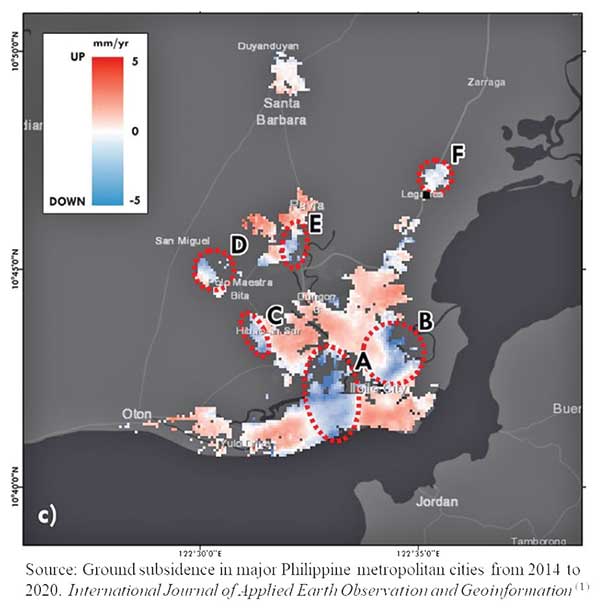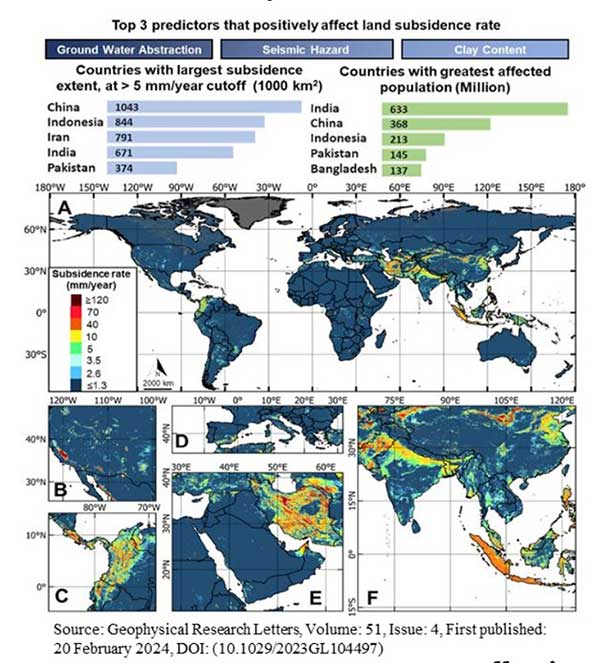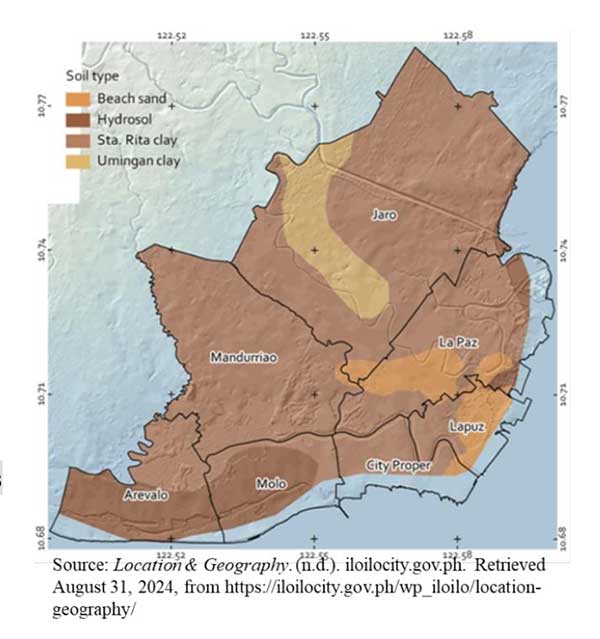

By Institute of Contemporary Economics
Iloilo City sinks 9 mm per year – study (Manila Times)
Experts warn Iloilo City could become the “Next Venice” amid rapid land sinking (Manila Standard)
Iloilo City, naga-usmod sang 9 millimeters kada tuig (bomboradyo.com)
These are just some of the attention-grabbing headlines of news media coming out of the briefing conducted by Prof. Jessica Dator-Bercilla presenting highlights of a study (1) on ground subsidence.
First things first, Iloilo City IS NOT sinking by 9mm per year. Only San Rafael in Mandurriao is. The snippets cited by media concerning Iloilo is part of a study entitled “Ground subsidence in major Philippine metropolitan cities from 2014 to 2020” (1) published in the International Journal of Applied Earth Observation and Geoinformation.
Second, the conclusions reached by the study are not new. The Philippines has always been identified as having coastal metropolitan cities facing the dangers of localized ground subsidence. In a research letter entitled “Unveiling the Global Extent of Land Subsidence: The Sinking Crisis” (Davydzenka et al., 2024) (2), the authors cited that – “Among the 195 countries considered for zonal analysis, the top five countries with the largest mean subsidence rates were found to be Philippines, Iran, Costa Rica, Indonesia, Uzbekistan…”
Finally, the appropriate description of the ground subsidence situation in Iloilo City should be drawn from the study cited by Prof. Dator-Bercilla itself which states in its conclusion that – “Using InSAR time series analysis validated with GNSS data, the following maximum subsidence rates were determined: 109 mm/yr in the Greater Manila Area, 11 mm/yr in Metro Cebu, 38 mm/yr in Metro Davao, 9 mm/yr in Iloilo City, and 29 mm/yr in Legazpi City”. [Emphasis ours]
Going back to Iloilo and to add a little more precision, the areas that the study found with worrying rates of ground subsidence were:
- San Rafael (Mandurriao), Iloilo City: – 8.8mm/year;
- Banuyao (Lapaz), Iloilo City: -8.1mm/year;
- Calahunan (Mandurriao), Iloilo City: -4.0mm/year;
- Alibay Norte, Oton: -4.6mm/year;
- Ungka I, Pavia: -4,7mm/year; and,
- Poblacion, Leganes: -2.6mm/year
While we understand the caution by which the Iloilo City government has chosen to view the findings of the study, it is also important to note that the predictors of ground subsidence are well established.
These include (1) groundwater extraction; (2) seismic hazard; and (3) clay content of the soil (2). Two of these three are present in Iloilo City which would lend credence to the study’s findings on ground subsidence in the city.

The level of groundwater extraction in Iloilo City has long been an issue. This chronic problem has itself bred suspicions of saltwater intrusion into the water table and the actual problem of the lack of water supply.
The most successful policy and regulatory approach to excessive groundwater extraction has been to totally ban it.
“InSAR results indicate that subsidence rates in Jakarta and Shanghai have slowed significantly, likely due to reduced groundwater extraction rates implemented as government regulations (Yan et al., 2020). This slowing of subsidence by thoughtful groundwater management is not new. For example, subsidence was halted or slowed in Houston in the 1970s and Silicon Valley in the 1960s after organized remedial action (Ingebritsen & Galloway, 2014). These examples show that regulation can be an effective tool for stopping subsidence in areas where groundwater extraction is the main cause” (Wu et al., 2022). [emphasis ours].

Adding to the predisposition of Iloilo City to ground subsidence is the natural geologic characteristic of being on a clay-based foundation. The picture shown on the right, taken from the website (4) of the Iloilo City government, shows that the majority of the city sits on clay.
It is well and good to continue to have further studies on ground subsidence for the city, but this should be focused on the monitoring of its progression and eventually, we hope, its regression. The effects of having the predictors of ground subsidence present in our area has now been supported data. What was predicted to happen has already happened. Further studies focused on the presence of the problem serves no purpose other than to (again) confirm its presence and will (likely) conclude that it has gotten worse. Furthermore, there is the risk that this will be used as an excuse to delay remedial actions that need to be done now.
Impact of actions addressing ground subsidence
Whatever regulatory and administrative actions are taken or not taken, there is the real risk that it will impact economic performance. The only question is whether we choose to take the pill now and potentially undergo short-term disruptions or delay action (or not act at all), opening up the possibility that we could face a bigger problem to solve. Either way, we will have to pay for the sins of the past. The best course of action now will be to act so as not to compound the impact of these sins on our community.
Solutions will not be easy
The solutions to address ground subsidence in Iloilo City will not be easy from the perspective that choices will have to be made that will antagonize certain sectors of our community. Some of these could include:
- a total groundwater extraction ban;
- a temporary moratorium on commercial and industry construction;
- the relocation of informal settlers in highly congested areas in the City Proper and the Batiano River / Boulevard (Molo) area;
- a full inspection of relevant structures (primarily buildings) for structural integrity;
- a re-assessment of the City Land Use Plan; and,
- a re-thinking of the impact of reclamation projects.
These are just a few of the actions that could (or should) be taken now. These actions can be seen as (1) directly addressing the problem at hand; (2) discovering what could be hidden impacts of the ground subsidence that have already occurred; and/or (3) ensuring that we do not exacerbate or replicate actions that lead to further and larger problems.
Many of the community impacts of ground subsidence are compounding in nature. We do not see them right away. But left unaddressed more dramatic effects are not just possible but are more than likely.
End Notes
(1) Sulapas, J. J. S., Ybañez, A. a. B., Marasigan, K. M. M., Grageda, J. M. B. M., & Lagmay, A. M. F. A. (n.d.). Ground subsidence in major Philippine metropolitan cities from 2014 to 2020. International Journal of Applied Earth Observation and Geoinformation, 133, 104107. https://doi.org/10.1016/j.jag.2024.104107
(2) Davydzenka, T., Tahmasebi, P., & Shokri, N. (2024). Unveiling the global extent of land subsidence: the Sinking Crisis. Geophysical Research Letters, 51(4). https://doi.org/10.1029/2023gl104497
(3) Wu, P., Wei, M., & D’Hondt, S. (2022). Subsidence in coastal cities throughout the world observed by INSAR. Geophysical Research Letters, 49(7). https://doi.org/10.1029/2022gl098477
(4) Location & Geography. (n.d.). iloilocity.gov.ph. Retrieved August 31, 2024, from https://iloilocity.gov.ph/wp_iloilo/location-geography/
(The Institute of Contemporary Economics is a multi-disciplinary think tank which aims to be a credible thought leader in the policy-making space. It seeks to promote a vibrant and sustainable economic environment particularly in Western Visayas. This underlies a belief that a strong and healthy economy is a pre-requisite to uplifting the lives of our people. As a think tank, the Institute will be an organization that will use specialized knowledge to report on and perform research on a wide variety of subjects. It advocates for necessary interventions by using our research to influence public opinion and policymakers. Analytical reports produced by the Institute will play an influential role in helping decision-makers craft major policy agendas. Follow us on Facebook)